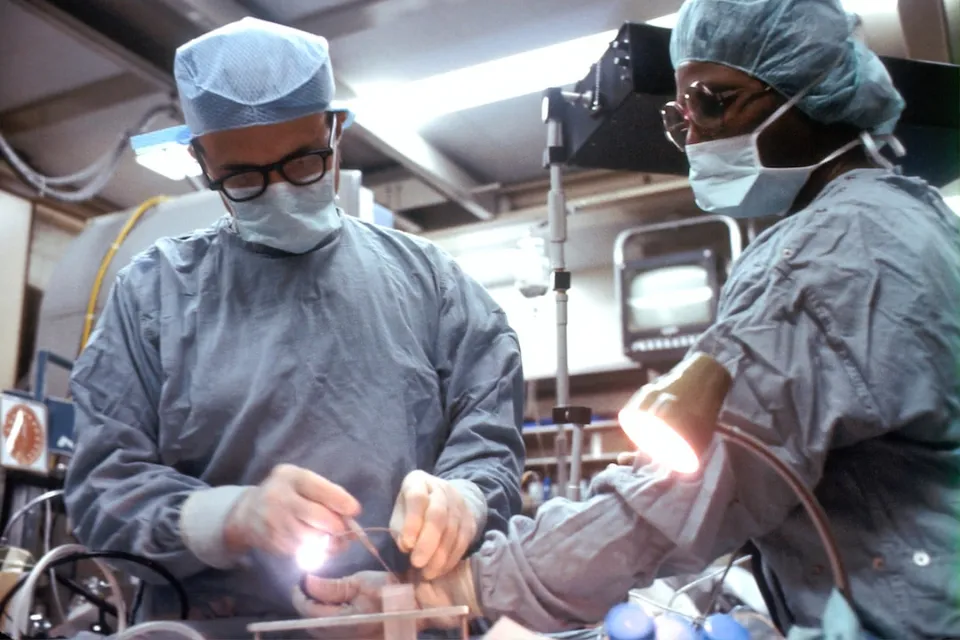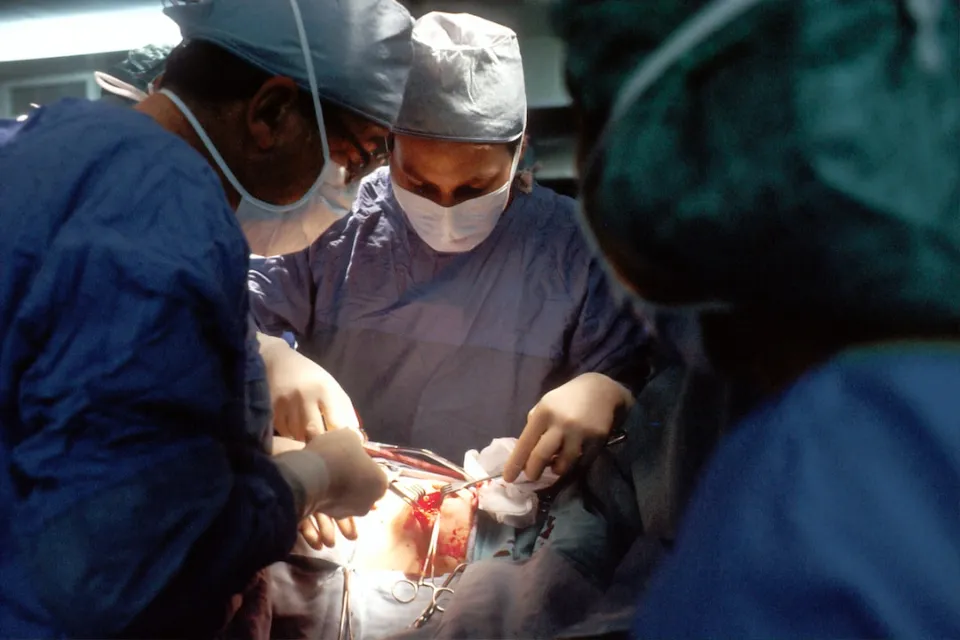When a weak spot in the muscle or adjacent tissue wall allows an internal body part to protrude, this condition is known as a hernia. A hernia can develop if there are any weak spots in your muscles, which are typically strong and tight enough to hold your intestines and organs in place.
An inguinal hernia (pronounced “inguinal”) is the most common type of hernia. It may present as a swelling or lump in the groin, or an enlarged scrotum (a small pouch containing the testicles). The swelling could hurt. Typically, the lump shows up when you lift something and goes away when you lie down.
Your doctor will give you instructions on what you should and shouldn’t do after having an inguinal hernia operation, but do you know what to wear? The answer is provided in the article that follows.
What is Inguinal Hernia Surgery?
A trained surgeon can find the majority of hernias during a physical examination. On rare occasions, extra tests like an ultrasound or CT scan are needed. Routine blood work and heart studies such as an EKG can be ordered prior to surgery based on your age and the presence of any existing medical conditions.
The two techniques used for inguinal hernia repair are traditional open surgery and laparoscopic surgery. Both methods yield excellent results and vary only slightly in a few small details. The surgeon’s decision regarding the best course of action for repair will be aided by specific patient factors. It is important to find a surgeon who can offer both laparoscopic and open techniques.

Laparoscopic Repair
Laparoscopic repairs involve making small incisions (usually 3 in number) at a distance from the hernia through which instruments and a video camera are introduced to perform the repair. In order to provide a working space for the surgery, the abdomen is inflated with carbon dioxide. In the course of repair, the hernia contents are pulled back into the abdomen. On occasion, the defect is stitched shut. The surrounding supporting tissues are then usually sutured or tacked to the thin piece of carefully chosen mesh covering the defect. Due to less postoperative pain in the initial days after surgery, laparoscopic repairs may facilitate a quicker recovery.
Open Repair
The surgeon may occasionally advise using an open technique for the procedure. Making a 2-4 inch incision over the hernia, reducing the hernia sac, and then fixing the problem are all steps in an open operation. The size of the incision will depend on the size of the hernia. In order to prevent excessive tension on the repair, a carefully chosen mesh is frequently implanted.
Do and Don’t: the Recovery After Inguinal Hernia Surgery
Here are some things you can do and should avoid after inguinal hernia surgery:
Food
You Can Do:
- Eat what you normally would. Try bland, low-fat foods like plain rice, broiled chicken, toast, and yogurt if your stomach is upset.
- If your bowel movements are not regular right after surgery, try to avoid constipation and straining. Take in a lot of water. Your doctor might advise fiber, a stool softener, or a mild laxative.
You Cannot Do:
- Avoid foods that can cause constipation, such as dairy, red meat, processed foods like pizza, frozen dinners, and pasta, sugary foods like cakes, pies, pastries, and doughnuts, as well as coffee and caffeine-containing beverages. There may be some discomfort, but not too much.
Activity
You Can Do:
- When you are fatigued, take a nap. Walking is a good form of exercise.
- If your surgeon approves, you may shower 24 to 48 hours after surgery. Do not take a bath for the first two weeks, or until your doctor gives the all-clear. Pat the incision dry.
- Permit the wound to heal. Move slowly and avoid lifting heavy objects until you feel better. Depending on the kind of surgery you had, you should be able to resume light activity after 1 to 3 weeks.
You Cannot Do:
- After surgery, you shouldn’t exercise for a week. The main exercises after this time, while the wound is still healing, involve lifting anything heavier than 10 kg. abdominal crunches (avoid these for 6-8 weeks after surgery).
Wear
Most patients find it helpful to wear a compression garment after their abdominal procedure. This is a soft, surgical-girdle-like garment that fits over your abdomen and compresses it, reducing swelling and promoting proper healing.
You Can Do:
- Hernia belts are abdominal compression garments that fit snugly around the abdomen to support the area without restricting blood flow. The goal of compression garments is to provide compression to the skin and soft tissues, alleviating pain, reducing swelling, and improving overall healing. Also uncomfortable and likely to cause bruising are sudden movements like coughing, laughing, and sneezing. Compression clothing aids in regulating these jarring movements and improves patient comfort. Different sizes of compression clothing are available; some are short and girdle-like, while others are longer and cover your thighs, knees, and even buttocks. The best options for abdominal hernia repairs, abdominoplasty, and abdominal liposuction are girdle-like compression garments or binders (a wide piece of the strong elastic material with zippers or Velcro closure).

- Following the repair of their inguinal hernia, male patients will be instructed to wear compression shorts or tight-fitting boxer briefs for a few days to help reduce the amount of swelling. No specific brands are advised or required, just make sure they fit more snugly. Every sporting goods retailer carries compression shorts.
- You can remove your compression garment for the shower after the first few days following your procedure. You might be instructed to wear your compression garment for weeks or months, depending on the complexity of your procedure and how quickly you are healing. The swelling usually goes down in two weeks, but it might take a few weeks for it to completely go away.
Medicines
- Use medications with caution. Read the label’s directions carefully, then abide by them.
- Take any painkillers your doctor prescribed exactly as directed.
- Consult your doctor to see if you can take an OTC medication if you are not taking a prescription pain reliever.
- If and when you can resume your medication, your doctor will let you know. You will receive instructions on how to take any new medications from him or her as well.
Incision Care
- You will have a dressing over the cut (incision). A dressing helps the cut heal and protects it. The best way to handle this will be advised by your doctor.
- If there is skin adhesive covering the cut, keep it there until it comes off. Liquid stitches or glue are other names for skin adhesive.
- If you have tape strips on the cut, keep them there for a week or until they come off naturally.
- Your doctor will advise you when to return to have any stitches removed if you had any.
- Every day, wash the area with warm, soapy water, then pat it dry. You shouldn’t use alcohol or hydrogen peroxide. They may retard healing.
When is Inguinal Hernia Surgery Needed?
Inguinal hernias can be treated surgically to strengthen the weak abdominal wall and push the bulge back into place.
The procedure is typically advised if you have a hernia that causes pain, severe or lingering symptoms, or if any serious complications emerge.
Complications that can happen as a result of an inguinal hernia include:
- obstruction – where a section of the bowel becomes stuck in the inguinal canal, causing nausea, vomiting and stomach pain, as well as a painful lump in the groin
- strangulation – where a section of the bowel becomes trapped and its blood supply is cut off; this requires emergency surgery within hours to release the trapped tissue and restore its blood supply so it does not die
To avoid any serious complications, surgery removes the hernia, but there is a chance that it could recur.
Summary
Activities following inguinal hernia surgery are not constrained by health issues or physical limitations. This means that as long as you don’t suffer an injury, you can walk, climb stairs, lift weights, mow the lawn, or engage in exercise. There are no special requirements in terms of dressing, and choosing the right compression garment can help you recover from your wound. In fact, resuming normal activities as soon as possible will likely facilitate your recovery. But if it doesn’t feel right, don’t do it. Observe the pain as a guide, and take it easy.



